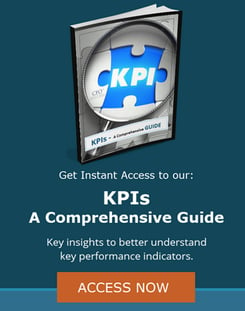
For many nonprofit organizations, revenue recognition is one of the most challenging accounting issues they encounter. The guidelines governing the recognition and classification of revenue are now, however, undergoing significant change.
ASU No. 2014-09, Revenue from Contracts with Customers (Topic 606)
The Financial Accounting Standards Board (FASB) has released more than one Accounting Standards Update (ASU) that affects when and how nonprofit organizations recognize incoming funds as revenue. The changes began with ASU No. 2014-09, Revenue from Contracts with Customers (Topic 606). The ASU was initially effective for reporting periods after December 15, 2016, but that date was moved forward. The effective date for most nonprofit organizations is calendar year 2019 or fiscal years ending in 2020.
Contributions Are Exempt
Many nonprofits believed that 2014-09 did not apply to them, as it exempted contributions from the guidelines. These nonprofits attributed their revenue to various types of contributions rather than as providing goods or services under contracts with customers. However, there are many types of revenue received by nonprofits that are subject to ASU 2014-09, such as memberships, tuition and many other types of fee-for-service revenues.
ASU No. 2014-09 mandated that revenue was recognized according to a five-step principle-based model, and this applies equally to a nonprofit organization. The ASU defines contracts as exchange transactions, which are a “reciprocal transfer between two entities that results in one of the entities acquiring assets or services or incurring other obligations.”
Follow A Five-Step Process
The five-step process involves identifying the customer and the contract, identifying the performance obligations, determining the transaction price, allocating the price to the performance obligations, and recognizing revenue when the performance obligations are met. Each step requires an analysis to determine contract revenue recognition. An extensive overview from Moss Adams (42 pages) can be found here.
ASU 2018-08, Clarifying the Scope and Accounting Guidance for Contributions Received and Contributions Made
Conversely, the FASB later issued ASU 2018-08, Clarifying the Scope and Accounting Guidance for Contributions Received and Contributions Made, the purpose of which is to clarify whether a transaction should be recorded as a contribution, as an exchange transaction, or as a bifurcated (split) transaction if it contained elements of both. It further distinguishes conditional and unconditional contributions as well as modifies accounting standards for restricted contributions.
Who Benefits?
Contributions are typically non-reciprocal, as only the donee receives value, so they are not classified as exchange transactions. A grant may be either a contribution or an exchange transaction, depending on the terms. If the nonprofit receives income in the form of dues, memberships, or sponsorships, and provides something of value in return, such as free admission to a fundraising event, then it has potentially entered into an exchange transaction and follow guidance from as outlined in ASU 2014-09 (Topic 606).
If the nonprofit controls how a grant is used, and if the nonprofit claims the benefits of the activity, then the grant is typically deemed to be a contribution. If the grantor receives value for the grant, it is an exchange transaction. The new guidelines specify that a benefit to society, even if it furthers the grantor’s purposes, is typically not an exchange of value. The ‘benefit to society’ clarification will shift how many nonprofits have accounted for government grants – previously recorded as exchange transactions, will transition to contributions with or without conditions.
Other criteria for distinguishing contributions from exchange transactions include, but are not limited to:
- Motive - did the nonprofit ask for contributions, or did it agree to provide benefits in return for cash or non-cash resources.
- Intent - did the donor specify that the funds were a contribution, or were the funds provided in exchange for a benefit.
- Amount - did the donor determine the amount, or was the amount based on the value of a benefit provided by the nonprofit.
It may not always be that easy to determine when or if there was a benefit, as this is a subjective term. Funds that are part contribution and part exchange transactions are going to require an investment of time for analysis to make sure they are correctly recorded.
Pass-Through Transactions
In addition to contributions and exchange transactions, a nonprofit may receive an “agency transaction.” That usually involves a donor who provides a resource to the nonprofit and instructs the nonprofit to distribute the resource to recipients designated by the donor. A typical example is a governmental organization providing funds to the nonprofit to be used for housing vouchers for homeless individuals. The funds merely “pass-through.” The nonprofit is only an intermediary, and all that can be recognized as revenue is the amount, if any, the donor allocates to it as administrative reimbursement.
When Is Revenue Recognized?
Receiving funds does not necessarily lead to recording them immediately as revenue. For example, annual membership dues are recognized in monthly increments. An exchange transaction will have one or more performance obligations or “barriers.” These are conditions that must be met if the nonprofit will be allowed to keep the funds. The funds are recognized (recorded) as revenue only as each performance obligation is met. For example, a nonprofit might receive a grant at the beginning of the year for distribution monthly for the designated purpose. One-twelfth of the grant is recognized as revenue at the end of each month.
FASB Subtopic 958-605, Not-for-Profit Entities—Revenue Recognition Staff Q&A discusses in detail performance barriers in recognizing revenue from grantors. Many of the transactions, especially those that require bifurcated record-keeping, necessitate (subjective) judgment in deciding when and how to recognize the income.
Audits and Financial Statements Must Comply with New Standards
Nonprofit managers can expect the auditing process to require more documentation from them. Auditors will have to evaluate whether revenue recognition complies with the new guidelines in differentiating between contributions and exchange transactions. The guidelines also mean that additional disclosures accompanying financial statements may be required. FASB ASU 2016-14 provides guidance to nonprofit managers and auditors on what needs to be disclosed about the assumptions made in revenue recognition.
Implementing the new guidelines requires planning and coordination with accountants even in the absence of an audit. Long-standing practices and procedures may need to be modified. Nonprofit managers can expect their Statement of Activities (revenue and expenses) and Statement of Financial Position (balance sheet) to look different from past financial statements. They can expect to invest time and effort in explaining the differences to their contributors and other interested parties. In their favor, as all organizations begin reporting under the new guidelines, greater consistency among nonprofits will enable managers and others to better evaluate how a particular organization compares with its peers.
Need help? Contact us here!





